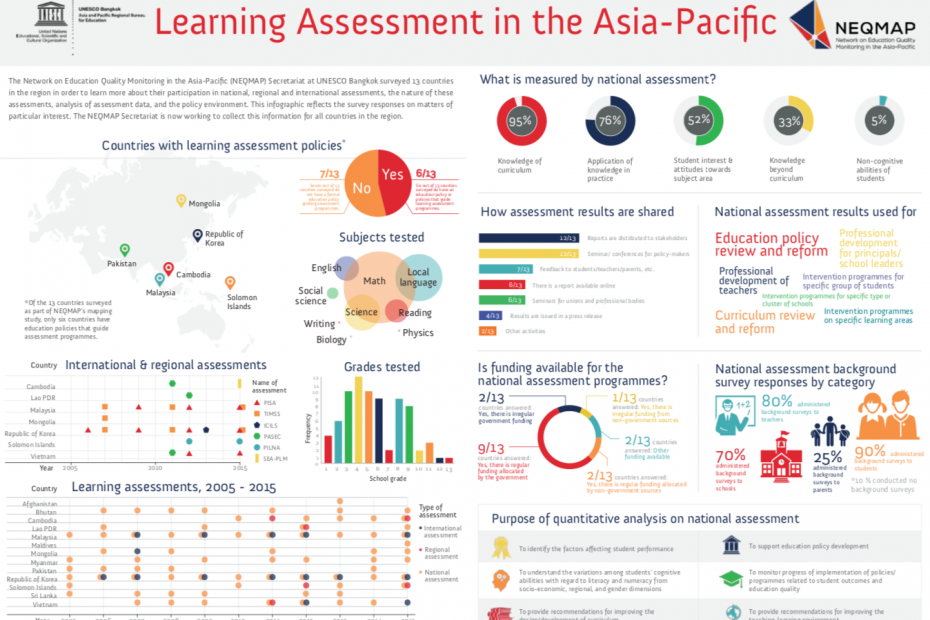
Phase I

As part of the LEAP programme, launched by UNESCO Bangkok in 2015, NEQMAP carried out a mapping study (phase I) on learning assessments (including public examinations) in the Asia-Pacific region conducted since 2005.
The purpose of this activity was to map national practices of collecting, analyzing and utilizing international and national assessment data for policy formulation and implementation.
A questionnaire was sent to 13 countries in the region to gather information on learning assessments as well as to understand how countries analyze and utilize assessment results to inform policy and planning decisions within their education systems.
These results have been translated into an infographic, the full version of which can be downloaded here. Below, we’ve included breakouts of the individual charts and graphics with a brief explanation of each.
To cover remaining countries/jurisdictions in the region, Phase II of the mapping study was launched in 2016 and is currently underway. The findings from this study will be shared at the NEQMAP’s 4th annual meeting in December 2016 and will be translated into an infographic and summary report early next year.
Click here to download the full PDF infographic overview of the mapping study.

More than half of the countries surveyed (7 out of 13) have no specific education policies for learning assessments; however, learning assessments may be covered under an overall education policy. The importance of specific policies for learning assessments, could indicate that the authorities responsible for national assessments have clear frameworks, guidelines, and mandates to carry out their assessment and the accompanying analysis. The presence of national policies (or lack thereof) on assessment systems may provide some insight into how the country measures and evaluates the quality of learning.

The most frequently tested subjects in national assessments carried out in the surveyed countries were mathematics, local language, and science, followed by English, reading (comprehension), and social science. In addition, interestingly, more assessments were carried out at the primary education level than the secondary or upper level of education in these countries. At the primary education level, the focus is more on grade 3-6 whereas grade 8 and 9 are targeted more at the secondary education level.

The number of countries in the Asia-Pacific region that participated either in international or regional assessment programmes has grown over the years. The graphic above highlights this trend and shows the countries (7 out of 13 surveyed) that have taken part either in regional (e.g. PILNA, SEA-PLM) or international assessment (e.g. TIMSS, PISA) in the last decade.

In addition to participating in international or regional assessment programmes, almost all of the countries in the study have national assessments to some extent. Some countries conduct these assessments every year, while others conduct them at frequent intervals. The graphic above indicates that the majority of participating countries have regularly occurring national assessments.

As shown in the above figure, the national assessments in the surveyed countries largely focus on testing how much knowledge students obtained from the implemented curriculum (95%) and how they apply their knowledge in the practice (76%). On the other hand, very few (5%) of the national assessments undertaken in these countries tested the non-cognitive abilities of the students, which could partly be due to the complexity of measuring such skills and competencies.

In terms of reporting and dissemination, most countries share the assessment results with the relevant stakeholders including the policymakers through preparing/publishing a report as well as organizing seminars or meetings. Only some of the countries provide feedback to students, parents, and teachers, or release the results to the press.

Most of the countries claimed that they used the results of their national assessments to review curriculum and education policy (the two highest responses in the survey), as well as for professional development. However, very few actually use them for learning interventions at the classroom level. This indicates perhaps that while the results are used to review education policies, a significant gap (either capacity or otherwise) could exist in translating the results and effectively formulating and designing measures to address challenges.

In most of the countries surveyed, the main source of funding for the national assessment programmes comes from the government, whereas a few countries also receive regular or irregular financial support from non-government sources.

In addition to the assessment itself, countries aim to broaden the depth of the results by including some form of background survey or questionnaire. By including background surveys, countries enhance the amount of information collected about the students, teachers, and schools, and this allows them to analyze what factors may contribute to student performance and learning outcomes. The graphic above indicates that many of the countries administer at least one type of survey in order to collect additional data.

The purpose for conducting quantitative analysis on the assessment data varies from country to country. The figure above demonstrates the most common purposes for assessment data analysis in the surveyed countries, which ranges from identifying factors in student performance, supporting education policy development, providing recommendations for curriculum review and reform to the monitoring of the education policies and programmes.
Author(s): NEQMAP
Year Published: 2015
Language: English
Country: Thailand


